The Legend of Zelda: Majora's Mask 3D (Nintendo 3DS) Review
By Joseph Walsh  16.02.2015
16.02.2015
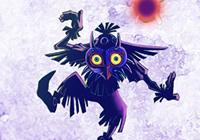
With 15 years having passed since its original release and the introduction of a few key gameplay tweaks, can the 3DS version of The Legend of Zelda: Majora's Mask still make a claim to be one of the most innovative and radical titles ever made, or has the test of time sent it crashing down into oblivion?
The Legend of Zelda: Majora's Mask is the saddest and darkest of games. Take the opening sequence as an example: having just saved Hyrule from a seemingly inevitable doom, a defeated looking Link makes his way through the woods, slouched over his ever reliable horse friend, Epona, and within seconds is ambushed, robbed and cursed by the miscreant Skull Kid. Even the fairies - Link's most helpful and caring cohorts - seem to be against him. This instantly sets the tone of what's to come and is an obvious statement of intent from Nintendo.
It's not very often that adjectives such as traumatic, bleak, tense, gloomy and tragic are used to describe a game that can also bring so much joy and is arguably one of the most satisfying titles ever made. Rewind a few years back to 2000 when Majora's Mask originally launched on the Nintendo 64 and it's easy now to suggest that the easiest thing Nintendo could have done following the success of the critically acclaimed Ocarina of Time, is to have released a spiritual sequel or, essentially, the same game. It's testament to Nintendo, then, for attempting to move away from Zelda's much loved, tried-and-tested formula, and for taking a huge risk by trying to reinvent the metaphorical gaming wheel. Welcome to Cubed3's timely review of The Legend of Zelda: Majora's Mask 3D.
There's much to be said about what it is that makes Majora's Mask so special, whether it's the temple designs, the harrowing music, or the controversial 'Three-Day System' mechanic that forces the player to take on and finish the game at its own pace, rather than their own. However, the real magic and soul lies within its people. Ignoring side-quests would not only be a blasphemous snub towards the game's most charming and poignant moments, it would also mean missing out on collecting a majority of the masks, and in the land of Termina, Link is very much defined by these masks. Majora's Mask may not have invented side-quests, yet it did put a huge emphasis on them, so much so that they account for half the game, and the level of detail gone into a lot of them is quite astonishing.
There's an unparalleled level of satisfaction to be had from solving the requests and problems of townsfolk, experiencing their woes along the way - dig deep into their souls and even innocuous conversations can result in uncovering their troubled past, present and, sometimes, sinister tales. One story involving a couple, in particular, is still, to this day, incredibly heartbreaking and impressively complex in its design.
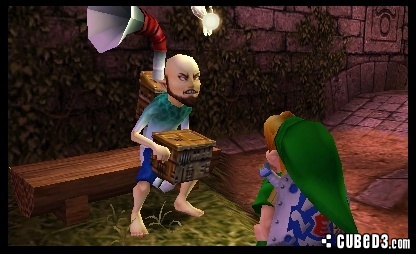
Of course, all of this is made possible by the 'Three-Day System' that is the very backbone of Majora's Mask. The short story is that Link has 72 hours (about an hour in real-time) to stop the moon from crashing into Termina. The slightly longer version is that with the power of his Ocarina, he has the ability to manipulate time in his favour, whether that be slowing it down, skipping forwards a few hours, or simply starting all over again from Day One. The good news is that Link can save Termina over and over again, although by resetting time he loses most of his items along the way. Sounds complex? It is. Even to this day, no game has attempted to take on time manipulation in the same way Majora's Mask did. There have been examples of the concept of time being used to affect a game's universe and surroundings, but none have tackled it in such a convoluted and expertly crafted fashion.
For many gamers, constantly being forced to finish their current mission was, and still is, the overriding feature that made or broke their love for the game. With that in mind then, Nintendo has tweaked the 'Three-Day System' to accommodate handheld gamers, as well as utilising the 3DS' hardware to make some subtle refinements as an added bonus. To say whether these changes are an improvement or not is subjective, but even so, it's fair to say that given the nature of its platform of choice, all changes made are necessary. For starters, the save system has been streamlined to allow for a simpler way of recording progress, and there are now even more save points than before. It's also now possible to shift time forward by the hour, rather than being limited to half days, as seen in the original version. By understanding how Majora's Mask wants to be played and exploiting these new game mechanics, it can potentially remove some of the tension that comes with fighting against time, but, all-in-all, these updated modifications are a welcomed addition.
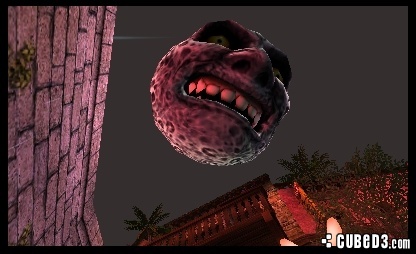
Nintendo's decision to cut back on the number of temples and include four, rather than seven as seen in Ocarina of Time, was indeed a bold move, and perhaps a way of communicating the 'less is more' or 'quality over quantity' theory. Since then, recent Zelda games - Skyward Sword, in particular - have mixed up the classic temple puzzle-solving formula in a way that involves less of the burning-sticks-to-light-lamps-and-open-doors way of thinking and introduced a horde of new weaponry, allowing them to re-imagine the series' regular trademark fixture. Therefore, it's even more impressive that even now the temples seen in Majora's Mask are as remarkable now as they were back in the day. Bearing in mind that these were all designed to be completed within an hour, the size, scale, and quality are on par with the rest of the series, with the only requisite for completion being the gamer's own time-management skills.
The bosses are, as expected, darker in tone than those seen in previous games and are as memorable as the temples they preoccupy. With each mask altering Link's physical appearance and entire move set, each battle is as captivating as the other and figuring out each of the bosses' weak points involves examining a multitude of possible solutions, ultimately providing a huge sense of gratification and relief. Bosses aside, the build up to each of the temples is in itself every bit as memorable as anything seen throughout the series. As previously mentioned, because of the emotional connection likely to be harboured between the characters and Link's puppet master, there's an extra degree of motivation to see out each quest to the end. Coupling that with fantabulous level design, it's easy to suggest that Majora's Mask connects on a more psychological and technical level - not just when compared to other Zelda games, but with other titles on the whole.
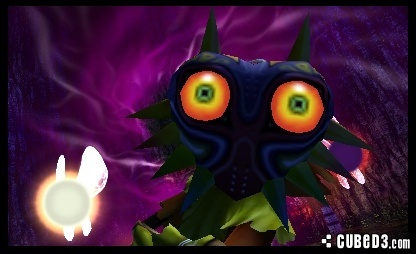
When speaking about and referencing what it is that makes Majora's Mask so wonderful to behold, it's impossible not to bring up the music that follows Link around as he tries to interpret the world around him. The offerings here are all about matching moods and never before has a soundtrack been so symbolic of a character's emotional state or Link's current location. Venture into the Astral Observatory only to be welcomed by a piece of music that is so bewitching, enchanting, and elegantly composed that despite carrying the weight of the moon on Link's shoulders, it's tempting to sit back and gaze at the stars, entranced by the seductive, yet melancholy piano riff. It creates a desire to stay longer, although lingering around for any amount of time simply isn't an option.
Then, as time ticks down and the forecasted arrival of the slow-going moon comes to claim its victims with its malevolent glare, the village bells start to chime and the music formally known as 'Final Hours' begins to haunt the locals through the final hours of their existence. Of all the music or atmospheric pieces in this and other Zelda games, this is the one that best summarises and evokes all the relevant feelings for its intended purpose - in fact, it will leave Link feeling so dispirited and full of sorrow that it would be easy to forgive him for dropping his sword and conceding to his fate there and then, whilst counting down through the final minutes and embracing his and the villagers' demise.
Not many games can claim to render up as many iconic moments as Majora's Mask has and, with that said, how many other forms of media can profess to creating such a varied, risky and, most importantly, fun piece of entertainment? The Legend of Zelda: Majora's Mask 3D is a stark reminder as to the importance of innovation in videogames - the most ironic thing is that it has taken the release of a fifteen year old game to remind the industry of that.
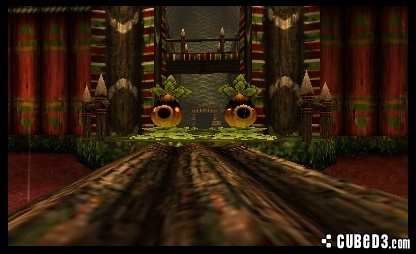
Cubed3 Rating
Masterpiece - Platinum Award

When arguing in the almost defunct 'Are videogames an art form?' debates, Majora's Mask is amongst a handful of other titles that can act as a defence 'for' games as it clearly states and displays the most compelling reasons as to what videogames are capable of when developers are free to experiment and toy with ideas. Based on an almost perfect blueprint, Majora's Mask dared to be different at a time when it probably didn't need to and delivered a game so peculiar that it still stands out fifteen years after its initial release. Its ability to stir up such an array of emotions, whilst not shying away from a solid game structure, is something rarely seen in games, and the way it allows the gamer to dictate and influence each individual's destiny is a marvel to behold.
To say that The Legend of Zelda: Majora's Mask 3D is the stand out best game in the Zelda series is, indeed, a daring - and inaccurate - verdict, given the calibre of the series. However, there can be no doubting that this is the most alluring and positively tortuous game within the series, and for that reason alone, it is worth everyone's time.

![]() 10/10
10/10
![]() 9/10
(2 Votes)
9/10
(2 Votes)
 Out now
Out now  Out now
Out now  Out now
Out now  Out now Also on
Out now Also on 
Comments
Comments are currently disabled

 Sign In
Sign In Game Details
Game Details Subscribe to this topic
Subscribe to this topic Features
Features





 Top
Top

